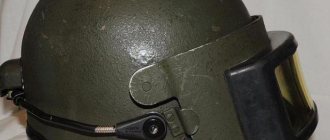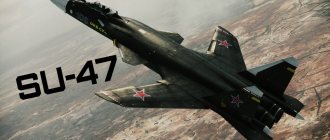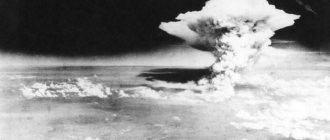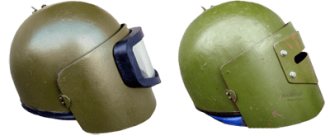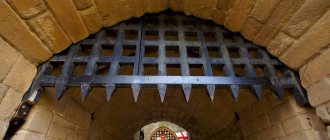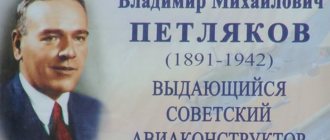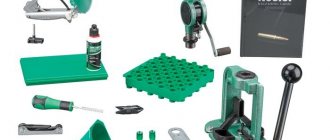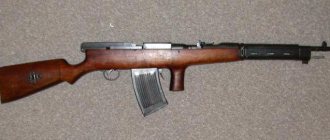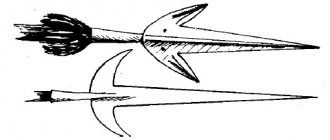In the images of our warriors from almost all eras there are various helmets
Do you know what kind of helmets these are, how they appeared, why our helmets were the best in almost every era? Today we will try to tell you an interesting and full of surprises history of the evolution of Russian helmets - from the helmets and shishaks of Russian warriors and heroes, erichonkas, iron hats and cavalry helmets to modern steel, Kevlar and even titanium helmets of our soldiers and special forces.
Protective helmet P7 (6B7) Russian Armed Forces #1
Protective helmet P7 (6B7) Russian Armed Forces #1
Protective helmet P7 (6B7) Russian Armed Forces #2
Protective fabric-polymer helmet P7 (6B7) of the Russian Armed Forces
General military helmet, first generation.
It is made of a composite based on a combination of aramid fabrics and a film polymer binder. The helmet is the first production model made from a material alternative to armor steel, which made it possible to achieve higher protective properties while reducing its weight. According to GOST R 50744-95, used to classify the armor resistance of body armor (!), the level of protection of this helmet corresponds to class 1, which allows it to withstand direct hits from a 9-mm Makarov pistol (PM) bullet from five meters. Work on the creation of the helmet began in the 2nd half of the 90s, and was officially adopted by the Armed Forces of the Russian Federation in 2002. Initially, being a combined arms model, it was given priority to supply high-readiness units. During the production of the helmet at the facilities of the Armocom enterprise, modifications 6B7-1 and 6B7-1M were mastered. The developer of the helmet , the Steel Research Institute, has mastered the mass production of the basic helmet model -6B7.
Options:
Field protection helmet MICH TC 3000. US Army protection level IIIA
The TC 3000 is a revolutionary concept in the world of combat helmets. While being very compact, the TC 3000 reduces the risk of interference of its ACH user with its immediate environment and enables its use as a paratrooper helmet. The performances of this advanced helmet take advantage of the latest developments in protection against fragments and shock and impact absorption. These performances are really adapted to the threats that a ACH user will encounter on modern theaters of operation. The limited weight and an unequaled level of comfort ensures to its ACH user mobility and efficiency in the scope of even very long missions. The TC 3000 is compatible with the use of NBC protections, bulletproof jackets, breathing masks, protective goggles, ballistic or not. It enables the easy integration of combat systems such as electroacoustic systems for communication, ANRs, NVGs… The TC 3000 is capable of remarkable ballistic performances when one considers its low weight and its incredible comfort: the helmet shell has a ballistic protection level of IIIA according to NIJ-STD-0101.03 standard. It is capable of the following performances in resistance to standardized fragments: Resistance to fragments: V50 with 1.1 g (17 gr) STANAG 2920 fragment: 670 m/s (2198 fps) Resistance to bullets:
Level IIIA according to NIJ-STD-0106.01 method and NIJ-STD-0101.03 ammunitions.
The screws that are apparent on the TC 3000's outside surface are ballistic and will pass the 9 mm test. Composition:
Ballistic material composing the helmet shell is a pre-impregnated paraaramide fabric composite.
The helmet's special shape is produced by highpressure compression inside of a mold. The external surface has a rough finish. It is equipped with a high resistance rubber brim of the same color as the helmet shell. The TC 3000 has an incomparable level of comfort for a combat helmet. It is guaranteed by a revolutionary suspension system composed of a set of pads containing a visco-elastic foam composite material that will thermoform accordingly to the shape and the temperature of the head. This set of suspension pads can be distributed inside of the TC 3000's shell according to the needs of each individual user for comfort and to the combat systems to integrate (electro-acoustic systems for radio communication, ANRs, NVGs, face-shields, …) . The set of suspension pads allows the layout of the weight of the helmet over the full surface of the ACH user's head, enabling the helmet to be worn for long periods of time. The layout of the weight as well as the physical properties of the material of the pads increase by 50% the resistance to shock, when compared to traditional combat helmet suspension systems. The 4 attachment point chinstrap system of the TC 3000, as well as the 2 piece chinstrap enable an easy and quick adjustment to the ACH user's head. It ensures the helmet to be a very stable platform for the integration of combat systems. Sizes:
S size: 52 cm to 56 cm (6+ to 7) M size: 56 cm to 58 cm (7 to 7+) L size: 58 cm to 60 cm (7+ to 7+) XL size: 60 cm to 62 cm (7+ to 7+) Weight (helmet alone): S and M sizes: 1.40 kg (3.1 lbs) L and XL sizes: 1.45 kg (3.2 lbs)
Colors:
Olive Drab or Black TC-3000-01- BK = Small (6 + to 7) - Black TC-3000-02-BK = Medium (7 to 7 +) - Black TC-3000-03-BK = Large (7 + to 7 +) - Black TC-3000- 04-BK = XLarge (7 + to 7 +) – Black TC-3000-01-OD = Small (6 + to 7) – Olive Drab TC-3000-02-OD = Medium (7 to 7 +) – Olive Drab TC-3000-03-OD = Large (7 + to 7 +) – Olive Drab TC-3000-04-OD = XLarge (7 + to 7 +) – Olive Drab
Combined arms modernized helmet SSH-68M of the Armed Forces of the Russian Federation
Combined arms modernized helmet SSH-68M of the Armed Forces of the Russian Federation
The SSh-68M helmet is a further development of the conventional all-army steel helmet SSh-68, produced since 1968 and nicknamed “Gedeerka” by the troops - due to its characteristic conical shape, similar to the NVA helmet of the 1956 model, and “
Afghanka” " - due to the same wide brim, which was believed to protect from Afghan sand pouring down the collar of outerwear. In the late 80s and early 90s, aramid materials became increasingly popular, and one of the main developers of protective equipment, the Steel Research Institute, increasingly experimented with their use. By that time, the Steel Research Institute already had to its credit an example of a successful combination of metal and aramids - the K6-3 helmet and then the Altyn, so it was decided to use the same method to modernize the SSH-68 steel helmet, at that time already a veteran of the domestic protective helmet market helmets There were several reasons for this step, and one of them was the obvious reduction in funds for the production of protective helmets, while generally raising the protection class to modern requirements. The base of the helmet remains the same SSH-68, but from the inside, a support made of a combination of aramid fabrics and polymer binders is attached throughout the entire area of the helmet. A special rim made of the same aramid, easily recognizable from other helmets of the Steel Research Institute, is attached to the cut of the helmet, reducing the risk of injury. The outside of the helmet dome is painted with modern paints in either plain or camouflage colors. Also, the helmet is often equipped with textile covers in camouflage colors. The under-body device, like the chin strap , has not undergone any changes and has remained virtually unchanged, with the exception of the fastening tools - now special bolts are used instead of the previous rivets. There are currently two models of the modernized general army helmet on the market: 6B14-SSh-68M and SSh-68N. There are no fundamental differences between these two helmets, with the exception of the under-tool device. The SSh-68M is supplied to the armed forces, and the SSh-68N is supplied to the needs of the Ministry of Internal Affairs . Name of
the helmet : SSh-68M, SSh-86N, according to the classification of the manufacturer and the GRAU of the Ministry of Defense - helmet 6B14
Production period:
2002 - our time.
Material of manufacture:
combined, top -
steel , lining made of aramid fabric. Contents: helmet , covers of various colors. Protection class:
1.
Status:
produced, used.
Manufacturer:
Steel Research Institute
Where used:
Ministry of Defense of the Russian Federation.
Author
of the material: Helmet collector from Russia “Raccoon” Andrey
Options:
General-arms aramid-composite armored helmet 6B7-1M of the Russian Armed Forces
General-arms aramid-composite armored helmet 6B7-1M of the Russian Armed Forces
The general-arms protective aramid-composite reinforced helmet “6B7-1M” is intended for use in a set of combat equipment as a means of individual armor protection for military personnel of the Russian Ground Forces and
Airborne Forces during all types of combat operations. Main characteristics The helmet provides a level of head protection from V50 fragments of at least 630 m/s and from bullets from PM pistols from 5 meters and TT from 50 meters. The helmet protection area is at least 11.5 dm2. The weight of the helmet is no more than 1.15 kg. Features • consists of a body and a sub-body device • the protective structure of the body is made up of discrete fabric material based on aramid threads • retains protective properties at temperatures from -50°C to +50°C • allows driving vehicles • allows decontamination, degassing and reduces the protective and operational characteristics after exposure • does not interfere with the perception of environmental sounds • has repairability, allowing repairs to be carried out in the field without the use of special devices • has a design that does not require special equipment or accessories to ensure maintenance and repair • non-penetration of secondary fragments inside the helmet if not penetrated • a belt of continuous wear for at least 24 hours without irritation and abrasions • compatibility with summer and winter uniforms, standard elements of military equipment • convenient and quick putting on and taking off without assistance • reliable fixation on the soldier’s head and does not move when performing various techniques and actions • the ability to land, place in military equipment and other vehicles, as well as the use of individual weapons while in them • performing actions characteristic of a combat situation • compatibility with communications, surveillance, aiming equipment • the ability to attach a camouflage cover and mesh • operation in winter through the use of an insulated balaclava Manufacturer: Closed Joint Stock Company “Center for High-Strength Materials “Reinforced Composites” CJSC TsVM “Armocom”, Russia
Author: VLADIMIR KRASHEVSKY. PHOTO FROM THE AUTHOR’S ARCHIVE PROJECT “ALTYN”
March 31, 2020
Photo: Employees of Group “A” of the Main Directorate of Security of Russia near the White House. October 4, 1993
Books, and today the Internet, are a repository of a huge amount of information. The only question is - how valuable and truthful? There are still heated debates on a number of aspects relating to military equipment, elements of equipment and personal armor protection (PIB).
The veil of secrecy is not always easy to open. In some cases, a deep immersion into the topic is required, sometimes taking a long period of time. Until recently, one of the stumbling blocks was the history of the creation of the domestic armored helmet “Altyn”.
I slowly collected and systematized information on domestic and Western NIB in my free time for the author’s printed publication. At the same time, work was carried out on a number of books on the symbolism of special forces units.
I was prompted to enter the Internet space by creating the KrashTest (Krashevsky test) channel on YouTube by video reviews and articles in books and magazines, where the real history of individual elements of armor protection, such as the Altyn helmet and its later modifications, was presented absolutely untruthfully and incompetently . In many ways, this was due to the banal reluctance of the authors to understand the issue in more detail and qualitatively.
A similar approach is observed today in almost all areas and this is due to the desire of a certain category of citizens to receive immediate benefits in the form of financial or PR bonuses. They are absolutely not concerned about the quality and reliability of the material. And reader (spectator) demand has become much more primitive in recent years, which plays into the hands of liars and fake-throwers.
I did not focus exclusively on reviews and on the same resource I created a platform for communicating with interesting people in the format of interviews, since TV programs are limited in the choice of topics and guests due to the internal policies of the channels. Nowadays, political shows with ignorant loudmouths or entertainment programs are in fashion.
Specialized channels are mostly foreign and, for obvious reasons, are aimed at Western viewers. Those few domestic ones that cover military topics are more “jingoistic” than informative.
I agree that due to the nature of my activity, the contacts I have accumulated and the clearances I have, I have a much better chance of getting to the bottom of the truth, but no one has canceled the basic things. The authors of publications and video reviews did not even try to familiarize themselves with the contents of specialized forums, study the GRAU indices that are in the public domain, study hundreds of videos and photographic facts, make basic thickness measurements and clarify the weight of specific products they have at hand.
Moreover, some clever people persistently convinced the viewer of the non-existence of the GRAU index on the armored helmet of the Research Institute of Steel 6B6-3. They say there is no such index in nature. There is K6-3, where the extreme designation is not the number three, but the letter “Z”, like the capital one from the word “took”. And such nonsense was presented in the context of the fight against illiteracy among those interested in the topic of NIB. As for me, such a position can be safely dubbed the final and irrevocable breaking of the bottom.
A similar situation is observed in book publications. The authors, without hesitation, copy information from the Internet, enlisting reviews from authoritative military officers, academicians and doctors of technical sciences. And the reviewers, in turn, having received a one-time jackpot, do not even get acquainted with the text of this pseudo-literature. And what kind of authors are they if all their “work” is plagiarism of other people’s material and photographs.
Regarding the “Altyn”, almost all sources indicated that the domestic armored helmet was created in the first half of the 1980s, was initially produced without an aramid support, had a titanium thickness of 4 mm, and was combat tested in Afghanistan.
It was also noted that the USSR KGB officers provided the engineers of the Steel Research Institute with all the necessary information about the production of titanium helmets in the Austrian company Ulbrichts, which is essentially utter nonsense.
As a result, we had a completely distorted picture regarding the dates of creation and operation, thickness, modifications of the Altyn and other historical and technical issues and features. The only truth was the information that the prototype of “Altyn” was the Western armored helmet PSH-77 (TIG).
The real history of the Altyn armored helmet is indeed inextricably linked with the West German PSH-77 from TIG and its subsidiary Garant, created in 1976. TIG has specialized in the manufacture of SIBs since the 1950s.
In 1955, Kurt Minder patented an armored apron and an armored mask in Germany. These were the first post-war inventions, which laid the foundation for a whole line of body armor, and later titanium armored helmets.
The head offices of TIG and Garant were located in Switzerland. Such a commercial move was necessary for the Germans to circumvent all kinds of sanctions and enter a more profitable platform in terms of selling their products from a neutral country. Hence the inscriptions often found on tags: “QUALITY CONTROL / TIG BICORD AG / Hunenberg / Switzerland.”
The TIG's calling card was the aforementioned titanium armored helmet PSH-77 (Polizei Schutzhelm-77), developed in the mid-1970s. In form and content, it was reminiscent of motorcycle and impact-resistant police helmets of those years from Romer and Schuberth and did not contain revolutionary technologies, except for a solid titanium body.
The average weight of the armored helmet was 3500 grams with a titanium visor and armored glass, titanium thickness 3 mm. In addition to titanium, secondary protective functions were assigned to a two-layer aramid support, a layer of polyurethane foam and an under-tool device.
Attention should be paid to the strict standards and requirements, including weight, for ballistic helmets in Germany, adopted in 1979. The weight of a size 57 helmet should not exceed 3100 g, as a result of which developers and manufacturers had to resort to a number of tricks to promote their products on the German market.
Early versions of the under-helmet devices of the PSH-77 helmets were of the motorcycle type (foam + damper), which, in combination with a titanium cap, revealed a number of shortcomings.
After the modernization associated with GOST, the final version of the helmet’s under-tissue device appeared, the design of which included a plastic frame from Schuberth (a modified frame of a construction helmet from the same manufacturer), and a petal-type leather support from Bundeswehr army helmets.
This technical move allowed us to solve the problem of ventilation and precise adjustment to the size of the head. The titanium cap was made in one size, and the adjustment of the elements of the subtotal device made it possible to adjust from the first to the third size inclusive.
The disadvantage of this arrangement was the higher fit of the helmet on the head, which reduced the area of protection. This forced the German engineers to experiment with the depth of the cap cut and the angle of the internal frame, although ideally a larger body would have been produced. The speaker had to be moved outside, which reduced the bullet resistance of the cap at its location.
The visors for the PSH-77 were developed for various tasks. They can be divided into titanium and polycarbonate according to the material of manufacture, bulletproof, anti-fragmentation and shockproof according to type. Standard titanium visors were made with characteristic cutouts in the lower part for the butt of the Heckler & Koch MP5 submachine gun. In the upper part, a window was cut out for armored glass, a slot or round holes for a night vision device.
In 1984, a titanium visor with an increased protection area was patented with a cutout in the lower part for the filter-absorbing gas mask box, while there were no side cutouts for the butt. All of the above visors had identical hinge mounts and were interchangeable.
Early armored glass for titanium visors consisted of three loose elements: the top layer was polycarbonate - 1.2 mm, the middle layer was automotive triplex (two 2.5 mm glasses glued together with a millimeter film), the bottom layer was polycarbonate - 12 mm. The entire structure was placed in a metal frame or rubberized body and attached to the visor.
With the transition to wide visors, armored glass was unified. It already consisted of two separate polycarbonate elements 10 mm and 8 mm thick with a layer of sealant.
Later, the production of various types of full-face polycarbonate visors of various thicknesses and configurations was launched.
To meet the needs of the West German anti-terrorism unit GSG 9, whose commander at that time was Ulrich Wegener, TIG-Garant released a visorless version of the helmet. Wegener, by order, abolished the wearing of visors on helmets, because he considered them inconvenient and interfering with the performance of combat missions.
Unlike GSG 9, the SEK state police special forces were not so categorical about the use of additional face protection. This approach was due to constant combat practice in skirmishes with street crime.
The TIG company offered its customers a wide range of products. The helmets were produced in several basic modifications, both conventional and radio-equipped. The latter were divided into types - with and without volume control. The PSH-77 could be equipped with a case in the required color. By the way, GOST had certain requirements for factory-produced covers: non-flammability, noise-absorbing effect, stable impregnation in the color approved by the customer.
TIG-Garant SIBs were equipped with transport bags, trunks, cases and suitcases. Most of them were produced by Cheney (England).
The radio version of the PSH-77 provided for the placement of a speaker, a microphone, a hollow sound guide with a cap or a flexible rod with a microphone at the end, and a head pad with a connector for connecting a radio headset from the West German company Peiker.
A spiral cable with a PTT button and a plug or adapter for various types of radio stations was connected to the block.
The connection of the plug to the block on the helmet was carried out in two sequential movements - entering at an angle and then snapping in a straight line, in order to avoid accidental disconnection.
It should be noted that here and below I provide general information, without diving into the intricacies of the technological process, analysis of the chemical composition of titanium alloys and a detailed study of transitional and experimental samples.
The PSH-77 helmet, popularly known as Tig, has become widespread not only abroad, but also in the Warsaw Pact countries. In the Soviet Union, Tig underwent combat testing exactly forty years ago during Operation Storm-333 in Afghanistan.
Contrary to popular belief, during the storming of the Taj Beg Palace, the soldiers of Group “A” of the KGB of the USSR, who were part of the “Thunder” group, wore ordinary army helmets. There were only a few teags. But these few helmets also showed their best side and played a certain role in the Soviet Union purchasing a large number of TIG-Garant products.
Unlike Western special forces, where titanium visors were not popular, in Group “A” of the KGB of the USSR this attribute was mandatory during training practice and combat work. The exception, for obvious reasons, was the use of Teagues during planned missions to Afghanistan. It was there that handicraft covers appeared on helmets, made by employees from scrap materials: KZS hoods, mask nets, cotton fabrics in “birch” camouflage.
One of the important tasks facing the KGB engineers at that time was the adaptation of the PSH-77 armored helmets to domestic radio communications, and specifically to the radio station of the Angstrem project. The alteration was carried out in Kuchino (city of Zheleznodorozhny), in one of the research institutes of the departmental plant of the KGB of the USSR and concerned not only radio communications, but also the replacement of the under-task device. This project in the Operational and Technical Directorate of the KGB received the code “Altyn”.
At an early stage, KGB specialists in the factory removed a two-layer aramid support, polyurethane foam, and a plastic frame from Schuberth, riveted six technological holes in the place where it was attached to the cap, removed the Peiker speaker and installed a plug at its location.
Inside the helmet were mounted two domestic PDM-1 speakers, a microphone and an under-the-head device developed on the basis of the first Tigov one, which was based on a foam shock absorber insert and a damper with a foam roller in a fabric shell.
In the late 1980s, protective pads for radio headsets made of duralumin similar to Tigov's were developed, manufactured and tested. Unlike the prototype, in addition to the protective pad located in the back of the helmet, there was a side one on the left side, with a push-to-talk button at the bottom.
This decision was made to prevent the radio communication channel from being blocked by pressing the push-to-talk switch when an employee is injured or there is any mechanical impact on it.
In the back of the head there was a 19-pin plug connector, to which there was a cable connecting to the Angstrem SN radio station. A seven-digit number was printed on the inside of the protective casing, the first two digits of which were the year of manufacture, the rest were the factory code.
The flexible sound guide rod has also undergone changes. In the domestic version, its base has become more angular and made of a different material.
There, in Kuchino, armored helmets were painted using Swiss technology in a protective color with a rough texture known as shagreen.
Summing up the interim result, I want to emphasize that at the initial stage the project under the code “Altyn” in fact did not consist in creating a domestic model, but in remaking and Russifying a Western one, since at that time we were not able to quickly master the production of our armored helmet. All parts with foreign markings were removed from the Tigs and replaced with Soviet or anonymous Western ones. The whole process was carried out at the research institute of the KGB departmental plant.
As for the domestic helmet, the design documentation of the National Institute of Aviation Technology (NIAT) for press equipment for stamping titanium caps dates back to 1986.
In 1987, NIAT, together with the Research Institute of Steel, developed a technology for assembling an army titanium helmet 6B6, including processing of a seamless titanium base and insertion of a fabric support. Moreover, the design documentation (CD) for this helmet is numbered 03. At the end of the 1980s, the first samples of 6B6 were made, but the helmet went into production a decade later.
But KD number 04, assigned to the main object of our research - the product “Komplekt 6B6S”, dates back to 1991. The set was produced by the Steel Research Institute and included a titanium cap 3 mm thick, an aramid support, and a visor (two options for window sizes).
Assembly, radio installation, installation of the under-body device and painting were carried out by specialists from the KGB Research Institute. Some of the parts and armored glass in the rubberized frame were purchased abroad. Unlike the PSH-77, the visor for the domestic model was not stamped, but bent on rollers, which created certain difficulties in fitting.
We had to first assemble the visor, then try it on the cap so that there were no difficulties when moving it along the helmet, observing all the gaps, and only then mark the holes on the cap for the fittings.
At an early stage, we even had to drill floating holes in the side stops. After adjustment, paired numbers were applied to the visor and cap using impact stamps. The cap was different from Tig's, both in geometry and size - our helmet was larger. But the general concept was undoubtedly Teague's.
This product has been assigned . The helmets were equipped with spare parts and accessories in cardboard boxes (one box for 5 helmets), maintenance (technical description), IE (operating instructions), and Passport.
It follows from this that the approved design and technological documentation of the Steel Research Institute for the manufacture of the product “Set 6B6S” (product 6B6S-01), according to which this set of parts could be produced and delivered to the customer, dates back to 1991, and not to the beginning of the 1980s .
It is clear that initially the design (configuration) of a titanium cap and stamping equipment were developed, the stamping technological process was worked out, the technology for manufacturing fabric supports was developed, prototypes were produced, but the helmet went into production only in 1991, and then in the form of a set of parts with subsequent assembly, which took a certain period of time.
The process of manufacturing parts for the “6B6S Set” product was as follows: the Steel Research Institute purchased titanium sheets and chopped them into blanks, from which caps were stamped in several passes at the Dubna Machine-Building Plant using the method of deep drawing-stamping with a plastic punch, using equipment made in Kharkov. This stamping technique allowed for a more uniform thickness when the cap was drawn. There were no losses due to scale, as with hot stamping, and it was possible to stamp sheets of different thicknesses in one tool.
Then, at the Steel Research Institute, the caps were marked according to the template, milled along the contour, and the holes approved in the drawings were drilled.
Also, shields (visors) were made from titanium sheets at the Steel Research Institute and holes were drilled into them for springs and hinges. At the same time, fabric-polymer bags were assembled, from which aramid supports were stamped using the equipment of the Balashikha Foundry and Mechanical Plant.
The assembly of bags for stamping supports was carried out by manually laying TSVM-J fabric and polyethylene film according to the scheme specified in the production process. When heated, the film softened, penetrated into the fabric, and after cooling it hardened again, held the layers together and held its support shape.
The advantage of thermoplastic technology is that the film does not penetrate deeply into the fabric, so the mobility of the threads is better maintained. And this, in turn, increases the armor-protective properties of the fabric compared to aramid structures glued with phenolic resins.
The number of layers of fabric and film in the package varied from 10+/–2 to 20+/–2 depending on the thickness of the titanium cap (3 mm, 3.5 mm, 4 mm).
In the early version, the support was a complex composition consisting of three components, reinforced with two titanium plates 1.2 mm thick in the occipital region, where thinning was formed during the drawing process. The weakest point of the support, and therefore the helmet assembly, was the temporal region - the border where the parts of the support were glued together.
The kit was accepted by the military representative office of the Ministry of Defense, after which acceptance stamps in the form of a diamond with the numbers 1144 were affixed to the titanium.
The helmet was declared in the 2nd class of protection (cap + aramid support), the visor was declared in the 1st class of protection.
Acceptance tests (APT) were carried out in military unit 44239 (in test).
Three products were selected from the batch for testing, and one product was tested (two additional ones were used if the results were negative).
A scoring shot was considered to be a hit 20 mm from the edge and 20 mm between hits (at least).
Five test shots on the helmet (cap) from a TT pistol.
Three scoring shots on the shield from a PM pistol.
Two test shots on armored glass from a PM pistol.
From the archival documents of the Steel Research Institute it follows: according to test results, the domestic armored helmet surpassed the PSH-77 in protective characteristics by 10-15%. But personal experience suggests that test results cannot always be trusted.
As noted above, the weak point of the “Altynov” from the first batch was the temporal region. Accordingly, the helmet did not resist a hit from a TT (7.62 mm pistol cartridge 57-N 134C with a Pst bullet) either 20 mm or 40 mm from the edge.
The TT bullet confidently pierced the three-millimeter bare cap anywhere from a distance of five meters. It is foolish to assume that the parts of the aramid support, connected end-to-end with rubber glue, had armor-protective characteristics capable of holding a steel core.
Based on a study of available supply data, it was found that deliveries of “Komplekt 6B6S” parts, starting in 1991, due to complex financing issues and problems with the acquisition of materials and components, were not carried out as planned, but with delays, postponements, completions and alterations, additional deliveries and under-deliveries. On average, 100-120 sets were produced per year.
In 1996, after production had been completed, new specifications for the “Altyn-R2M protective device” were approved. It used the Japanese r/s “STANDARD” as a radio station.
The main changes in the modernization of the early Altyn helmets concerned the reduction in the size and shape of the duralumin radio pads, the replacement of the 19-pin plug connector with a 7-pin one, the replacement of two domestic speakers with one imported one (two speakers made it difficult to recognize speech commands), and a change in the base of the sound guide. Moreover, both were borrowed from the PSH-77 of early releases.
The modernized sound guide had a base identical in shape to Tigov's, but metal and with an internal thread, which made it possible, in the event of a breakdown, to replace the flexible part of the rod with a cap with a new one from the spare parts kit.
As a result of changing the number of speakers, the hole for mounting the second PDM-1 speaker on the left side was plugged. Actually, the presence of such a plug (rivet) indicates an earlier production of the dome.
One of the innovations was the appearance of domestic armored glass in a rubberized frame under a wide visor, made in the image and likeness of imported ones from the TIG company. Armored glass in blocks was obtained from the Research Institute of Polymers (Dzerzhinsk). From the blocks, in the conditions of the Steel Research Institute, they were milled according to the drawing.
Then the parts were accepted by the quality control department, packaged and sent to the customer. At the same time, imported glass continued to be used both in Tigi and Altyny.
The sub-helmet device received an additional detail - instead of a bracket for a neck strap, a neck support appeared in the back of the helmet.
At the end of the 1990s, after a series of modernizations, the thickness of the cap of the Altyn armored helmet reached 4 mm, and a protrusion appeared in the upper part of the visor, which was popularly called the “hump,” respectively, the helmet - “Humpbacked Altyn.” This technical innovation made it possible to place a spring on the visor, which is responsible for fixing it in a combat position higher than usual, thereby solving the issue of better visibility.
The documentation was created in 1997 (re-coordinated in 2005), with the so-called “oblique shield” (product 6B6S-02), . The aramid support, unlike earlier developments, became one solid piece, consisting of ten layers of TSVM-J fabric. Armored glass in a rubber casing was installed exclusively of domestic production.
The helmet turned out to be of high quality and super durable. And despite the disadvantages in the design of the under-body device in terms of comfort, heat transfer and precise fit, it surpassed Western analogues in bullet resistance, including those from Ulbrichts (Austria), a leader in the production of titanium helmets in the West. Even a bare cap without aramid confidently withstood a hit from a TT pistol from five meters.
The modernization of 1997 affected not only the Altyn armored helmets, but also the PSH-77 (TIG) that continued to operate. At the same time, in Tiga the sound guide rod was moved from the left side to the right, and the technological hole under it was plugged.
It is worth noting that most of the modernized PSH-77s, which were in the same line with the Altyns, were bare metal without aramid support, but for some reason they continued to be equipped with Russian anti-terrorism units until the very end of the “era of titanium”. Many employees even “hunted” for lighter and more convenient Tigs, not realizing that by doing so they risked catching a bullet that would be their last.
Tig, by that time was morally outdated and in terms of armor protection was incomparable with the extreme version of the Altyn. This is evidenced by sad statistics - most of the FSB special forces officers who received fatal head wounds were at that moment in the Russified Tigi.
Various modifications of the Altyn have faithfully served their owners and employees of anti-terrorism units for decades. These helmets saved the lives of many.
“Altyn” became a living legend and took its honorable place in history. Since 2008, the helmet began to be replaced by order by more “progressive”, in someone’s “wise and far-sighted” opinion, samples.
Later, a boom in light military composite helmets made in the UK and the USA began in the units, since the LShZ that replaced the Altyns turned out to be not as comfortable and bullet-resistant as users expected. The last batch of 6B6S-02 in the amount of one hundred pieces was manufactured for Cuban special forces in 2009.
Throughout the production period, the Altyn cap was made in the same standard size, like its Western prototype PSH-77 (TIG). The weight of the product varied from 4 kg to 4.6 kg depending on the year of manufacture and modification.
“Altyn” received a second life in the project of the Research Institute of Steel “Lynx-T” for the Russian Ministry of Internal Affairs. Essentially, this is the same helmet (size I) with minor design differences. In parallel with the “Altyns”, the first standard sizes of helmets 6B6–3 (K6-3) and a whole series of sapper helmets were manufactured using the same equipment.
"Altyns" were written off and ended up in numerous collections around the world. The demand for them is still great today, especially abroad. Some of the helmets remained with the owners, as a memory of bygone times and a symbol of the unbending special forces brotherhood.
A low bow to you, who wore this difficult “symbol” on your heads, protecting our peace. Eternal memory to the guys who did not return.
In conclusion, I want to answer the question of many readers who are perplexed by some praise of the old man “Altyn”, at a time when all progressive humanity performs combat missions in earless, super-light polymer helmets and is not raving about “titanium fever”.
Undoubtedly, to perform purely military tasks, lightweight, comfortable helmets are needed without restrictions on wearing time and with the ability to accommodate additional attachments. But in assault police and counter-terrorism special operations in European countries, the leadership is still with titanium.
Numerous studies have clearly shown that none of the polymer samples can compete in terms of basic armor protection indicators with their counterpart from the titanium + aramid composition.
We can only hope that the heads of law enforcement agencies will understand this issue and believe in the further development of the line of domestic assault armored helmets in Russia. And this is a whole complex of activities for the development and testing of new forms, the production of stamping equipment, a modern approach to the issue of the internal arrangement of a helmet, which requires considerable expenses.
In any case, the safety of the employee should be the main priority, and hence the key to the successful completion of assigned tasks.
The author thanks for the consultations and assistance provided in preparing the material: Andres Rosenthal (Germany), Sergei Chusov, Sergei Medvetsky, Viktor Yankov, Boris Chukhin and Evgeniy Stepanov.
Vladimir Vladimirovich Krashevsky, special forces soldier and military journalist. Long-term special correspondent for the Bratishka magazine. Since 2006 - employee of the International Association of Veterans of Anti-Terror Units "Alpha" (Ukraine). Author of a number of books and photo albums dedicated to the history and everyday life of various special forces of law enforcement agencies. He developed dozens of award badges, cockades and sleeve chevrons for special forces units of the CIS and Europe. Since 2014 - Chairman of the Council of "maroon" berets of the Supreme Soviet of the Russian Federation for the Republic of Crimea and the city of Sevastopol.
Platforms of the newspaper “Spetsnaz of Russia” and the magazine “Razvedchik” on social networks:
VKontakte: https://vk.com/specnazalpha
Facebook: https://www.facebook.com/AlphaSpecnaz/
Twitter: https://twitter.com/alphaspecnaz
Instagram: https://www.instagram.com/specnazrossii/
Odnoklassniki: https://ok.ru/group/55431337410586
Telegram: https://t.me/specnazAlpha
Over 150,000 subscribers. Join us, friends!
Rate this article
20293 views
Rating: 5
Combined arms assault helmet 6B27 Russian Armed Forces
Combined arms assault helmet 6B27 Russian Armed Forces
The 6B27 helmet was developed by the Russian enterprise Research Institute of Steel and was put into mass production in 2006.
6B27 is a modernized version of the 6B26 helmet and is included in the protection system of the Barmitsa kit. At the time of its creation and launch into mass production, the manufacturer declared that the helmet was unique in the world in terms of its characteristics. The helmet is superior to similar army helmets from leading countries in the world. The 6B27 helmet provides protection for a serviceman’s head from being hit from a distance of 5m. bullets from PM and APS pistols, as well as from PSM and TT bullets from a distance of 40m. and has increased fragmentation resistance ( 1st class of protection ). Anti-fragmentation protection (V50 = 580-680 m/s). The helmet provides protection against fragments weighing 1g. at a speed of 680 m/s. Protection area -11.5 sq.dm. One of the main advantages of the Russian 6B27 helmet is its low weight with a high level of anti-fragmentation protection. A comparative analysis of the Russian assault helmet 6B27 with the American composite helmet ASN shows superiority in weight: ASN -1.36 kg. helmet 6B27 0.95 kg -1.25 kg. The Russian helmet also surpasses the ASN in terms of protection area. The helmet also features an improved under-crest system for improved durability and comfort. The helmet was adopted not only for the Russian army, but also for the CSTO troops. An analogue of the 6B27 helmet is the 6B7-1M helmet produced by the ARMOKOM Center for High-Strength Materials. The model not produced for the army is marked P-27. The helmet is available in the standard olive and comes with a cover. The manufacturer has released several batches of digital camouflage paint. This was done to simplify and conveniently install additional devices and lights. In addition, the presence of such a coloring of the helmet eliminates the need to use a camouflage cover. Weight:
0.95 kg -1.25 kg.
Manufacturer:
OJSC Research Institute of Steel,
Moscow , Russia
USMC Lightweight LWH Helmet
USMC Lightweight Helmet
The USMC LWH helmet was designed for Marines and is intended to replace PASGT helmets.
The LWH helmet is very similar to the PASGT helmet, however, it has a number of improvements: a 4-point harness with a chin fixation and a completely different suspension system, but the main difference from PASGT helmet the helmet has become lighter than 170 grams. helmet originally had a mesh suspension system, which was later converted to a suspension system using shock-absorbing inserts. This decision was not entirely successful ; the pillows turned out to be hard and unadapted to the shape of the head of a Marine Corps soldier. Using these pillows created discomfort. Soldiers had to remove their helmets in combat or dangerous situations due to discomfort. Manufacturers:
BAE Systems
